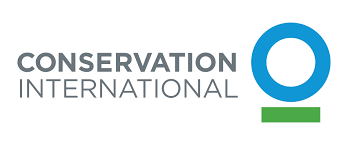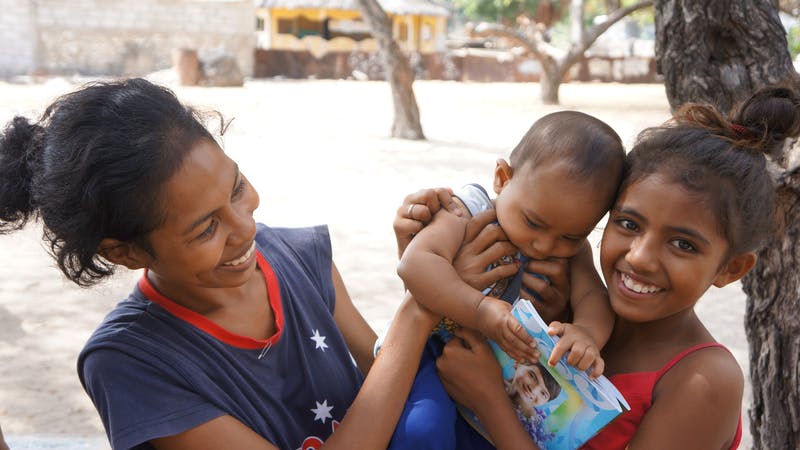Location
A global conservation legacy
Conservation International works to spotlight and secure the critical benefits that nature provides to humanity. Since our inception, we’ve helped to protect more than 6 million square kilometers (2.3 million square miles) of land and sea across more than 70 countries. Currently with offices in 29 countries and 2,000 partners worldwide, our reach is truly global.
Our Mission
Building upon a strong foundation of science, partnership and field demonstration, Conservation International empowers societies to responsibly and sustainably care for nature, our global biodiversity, for the well-being of humanity.
Our Vision
We imagine a healthy, prosperous world in which societies are forever committed to caring for and valuing nature, for the long-term benefit of people and all life on Earth.
Members:
Resources
Displaying 1 - 5 of 9Land Degradation Neutrality Fund. LDN Impact Monitoring Methodology. Technical Document
As investments in nature are needed more than ever, and are increasingly gaining traction, the challenge is to identify environmental and social risks and to demonstrate positive impacts associated with investing in nature-based projects in a standardized and comparable manner. To help create a clear track record of projects that can be assessed on risk-return-impact profiles, a certain degree of standardization is needed, while maintaining scientific rigor.
Trends Earth. Tracking Land Change. Trends.Earth Documentation Release 0.56
Trends.Earth (formerly the Land Degradation Monitoring Toolbox) is a platform for monitoring land change using earth observations in an innovative desktop and cloud-based system.
The three sub-indicators for monitoring achievement of Land Degradation Neutrality (LDN, Sustainable Development Goal (SDG) Target 15.3), are supported by: productivity, land cover, and soil organic carbon.
Reconnecting with nature in the shadow of war
Woman and her children in Timor-Leste. In a country where historic conflict has drastically impacted the environment and community dynamics, CI is helping to spark dialogue between local community members and government officials to promote peace through conservation agreements. (© Conservation International/photo by Lynn Tang)
This is the second blog in our series on environmental peacebuilding, which chronicles CI’s growing role in this emerging field of research. Today’s post focuses on our case study in Timor-Leste.
AGRI3 A Forest Conservation and Sustainable Agriculture Fund for Developing Countries
Objectives
AGRI3 will de-risk USD 1 billion of private sector financing and provide USD 15 million in technical assistance for forest conservation, restoration and sustainable agriculture in developing countries and emerging markets to address climate change and land degradation.
Other
Note: Disbursement data provided is cumulative and covers disbursement made by the project Agency.
Target Groups
Sustainable agriculture and forestry can help farmers to realize short-term and long-term economic benefits. According to the FAO, there is a direct positive correlation between growth in agriculture and the eradication of hunger and poverty.Agriculture is on average twice as effective in reducing poverty as non-agriculture sectors, and five times more effective than other sectors in resource poor low-income countries.However, the current trajectory of growth in agriculture is unsustainable and the negative environmental impacts from agriculture could increase 50-90% by 2050. To reverse this trajectory, there is a need for more investment into sustainable agriculture. This investment is crucial to increasing food production to meet growing demand, improving the access of vulnerable people to food, and by stabilizing markets so that prices are affordable for consumers and remunerative for producers.Investments in agriculture can improve the resilience of rural incomes and livelihoods by addressing climate change, conserving natural resources and facilitating the transition to sustainable agriculture. A key component of the Fund is improving rural livelihoods and farmers are the ultimate beneficiaries of all transactions related to the Fund. Each transaction should have a strong focus on improving rural livelihoods and the project’s Result Framework specifies that at least 300,000 farmers and farm workers will be trained in sustainable forest management and sustainable agricultural practices. The Fund will help transition farmers to climate-smart agricultural practices which helps to address the interconnected challenges of climate change and food security. Climate-smart agriculture can help increase productivity (e.g., from improved water and soil conservation), it can help enhance farmer resilience (e.g., via agricultural practices to reduce vulnerability to drought, pests, diseases and other climate-related shocks) and reduce emissions (e.g., increasing carbon sequestration through improved soil health and avoiding deforestation).Through this model the Fund is aiming to achieve the following key outcome targets over twenty years. These targets are all based on average figures from six selected case studies, and multiplying this average by AGRI3’s targeted number of transactions (see Appendix XVIII for more details):87,000 hectares of degraded land restored (contributing to GEF Core Indicator 3.1)41,000 hectares of forest under improved management (contributing to GEF Core Indicator 4.1)700,000 hectares of agricultural lands under sustainable management (contributing to GEF Core Indicator 4.3)18,400,000 tCO2eq of carbon emissions avoided/ sequestered (Over 20 years - contributing to GEF Core Indicator 6.1) 300,000 farmers and farm workers trained, 30% of whom are female(contributing to GEF Core Indicator 11).
Eldoret-Iten Water Fund for Tropical Water Tower Conservation
Objectives
Conserve globally significant biodiversity and protect the integrity and resilience of critical ecosystems and their services in the targeted water towers
Other
Note: Disbursement data provided is cumulative and covers disbursement made by the project Agency.
Target Groups
The project, in particular through its Component 2, aims at supporting local resource users and the relevant county organizations to establish sustainable agricultural practices that target improved livelihoods, ecosystem resilience as well as related land use planning approaches. Involving local stakeholders and decision makers in catchment restoration and land use planning increases their appreciation of the direct interactions between water management, agricultural production and ecosystem services; supporting increased supply of natural resources for the benefit of both the users and the catchment itself. Engaging private companies in upstream catchment management aims to improve food value chains, e.g. through longer-term horticulture contracts for export markets such as green beans, avocados, potatoes and other vegetables, leading to increased profits and improved livelihoods. These in turn provide further incentives for locally engaging in sustainable catchment management. In Component 2, the project commits to delivering socio-economic benefits to the local resource users through ? Climate smart food value chains benefitting 5,000 households (22,500 persons); and ? A 20% increase in farm production yields The project will promote labor saving technologies for the activities performed by women for marketable commodities as well as for household tasks such as water or fuel supply and food preparation. The technologies include solar cookers, rainwater harvesting, woodlots, water spring protection, and energy efficient stoves, among others. The project will also promote backyard gardens for food and nutrition security as well as conduct nutrition messaging to accompany any training at community level. Women groups will be encouraged to participate in livelihood value chain activities to earn income e.g. on beekeeping, or fruit tree management. Further indirect socio-economic benefits can be derived from the improved ecosystem status in the targeted catchments, including through improved water quality and quantity, wetland and forest restoration. The combination of biophysical and agricultural techniques and support for water management is expected to lead to diversified production and increased yields through improved soil retention; broadened adaptation potential and resilience through reduced erosion upstream, as well as at least stabilized catchment ecosystem services. Downstream economic benefits will include reduced water treatment costs through reduced sediment concentration and increased hydropower generation through higher water yield and reduced sedimentation. The Water Fund to be established will perpetuate the incentivization of integrated catchment management, leading to local and global environmental as well as local socio-economic benefits, both up- and downstream. Among the global environmental benefits are: ? Maintenance or improvement of the sustainable delivery of ecosystem services; ? Maintenance or improvement of land and soil productivity, in order to enhance food security; ? Synergies with other social, economic and environmental objectives, reinforcing responsible, inclusive and sustainable land management. The socioeconomic benefits to be delivered by the project and the EIWF are also closely aligned with Aichi Target 4 […] governments, business and stakeholders at all levels have taken steps to achieve or have implemented plans for sustainable production and consumption […], Aichi Target 7: […] areas under agriculture, aquaculture and forestry are managed sustainably, ensuring conservation of biodiversity, Aichi Target 11: […] terrestrial and inland water […] areas, especially areas of particular importance for biodiversity and ecosystem services, are conserved through effectively and equitably managed, ecologically representative and well connected systems of protected areas and other effective area-based conservation measures, and integrated into the wider landscapes […], as well as Aichi Target 14: […] ecosystems that provide essential services, including services related to water, and contribute to health, livelihoods and well-being, are restored and safeguarded […].




